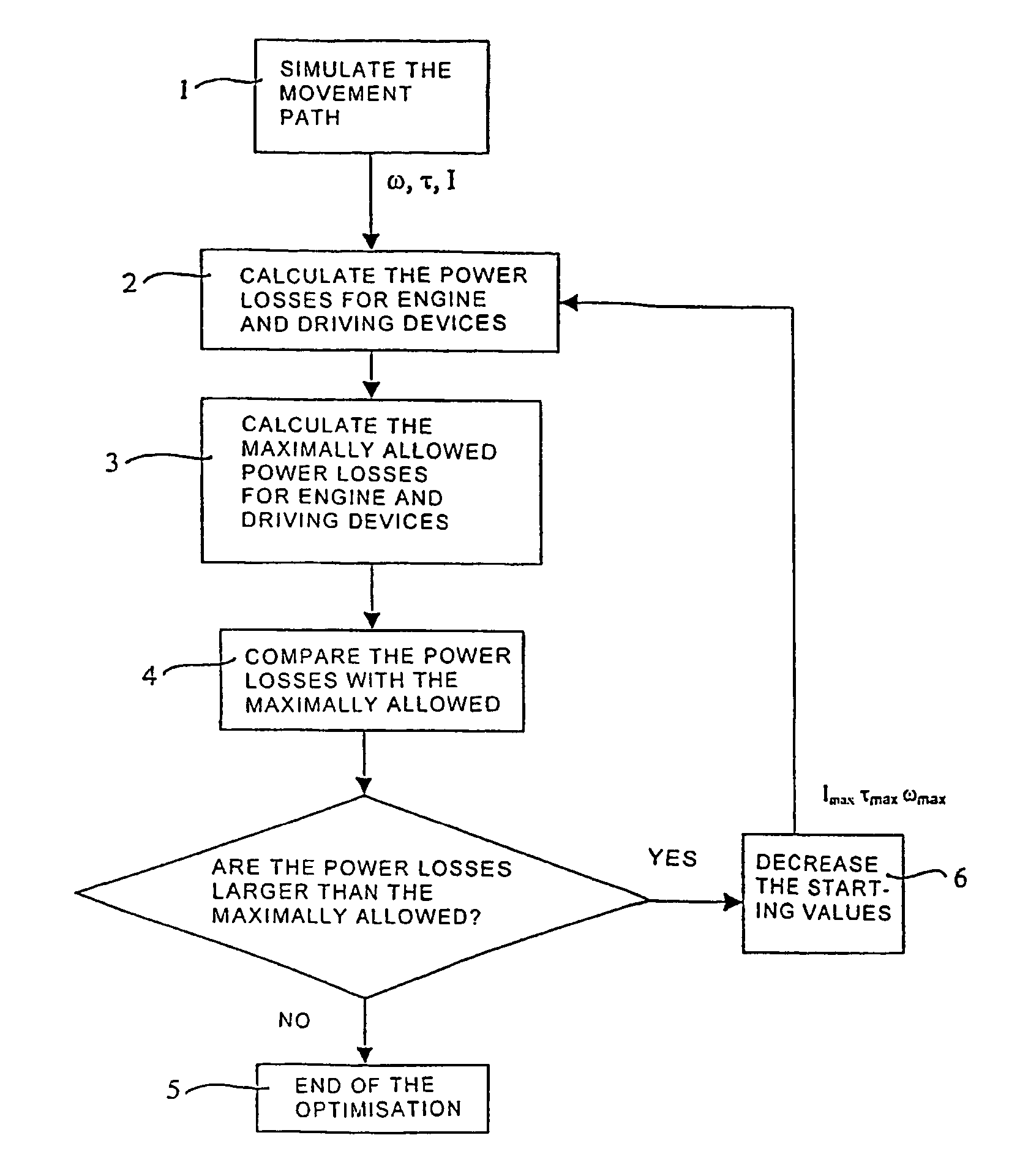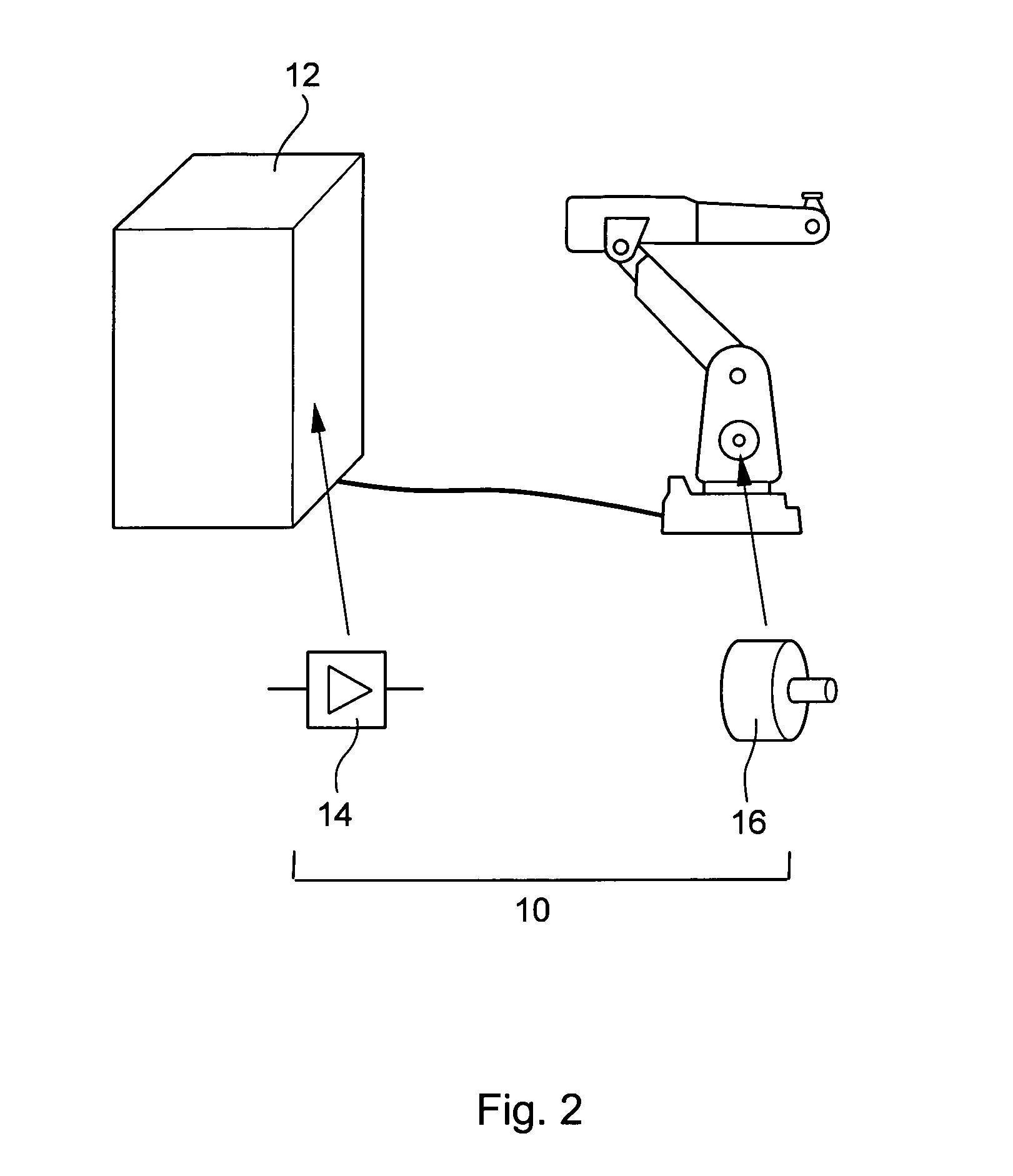Method for thermal optimization
a technology of thermal optimization and optimization method, which is applied in the direction of electric controller, electric programme control, program control, etc., can solve the problems of only taking advantage of the full capacity of the robot, putting demands on the thermal load of the driving system, and affecting the operation of the engine and the driving devi
- Summary
- Abstract
- Description
- Claims
- Application Information
AI Technical Summary
Benefits of technology
Problems solved by technology
Method used
Image
Examples
Embodiment Construction
[0005]The object of the invention is to obtain a method for optimising the movement performance of a robot with respect to the power loss in the driving system of the robot.
[0006]Optimisation of the movement performance of a robot for a current movement path refers to an optimisation of the accelerations and velocities of the robot axes for the movement path. According to the method according to the invention, this optimisation takes place through adjustment of the accelerations and the velocities for the movement path until a maximal thermal utilisation of the driving system of the robot has been achieved. A maximal thermal utilisation refers to that the power loss in the driving system is as close to the maximally allowed power loss in the driving system as possible without exceeding it. Of course, there may be other limits except the thermal, for example electrical and mechanical limits, resulting in that it is not always possible to run the driving system close to its outermost ...
PUM
 Login to View More
Login to View More Abstract
Description
Claims
Application Information
 Login to View More
Login to View More - R&D
- Intellectual Property
- Life Sciences
- Materials
- Tech Scout
- Unparalleled Data Quality
- Higher Quality Content
- 60% Fewer Hallucinations
Browse by: Latest US Patents, China's latest patents, Technical Efficacy Thesaurus, Application Domain, Technology Topic, Popular Technical Reports.
© 2025 PatSnap. All rights reserved.Legal|Privacy policy|Modern Slavery Act Transparency Statement|Sitemap|About US| Contact US: help@patsnap.com



